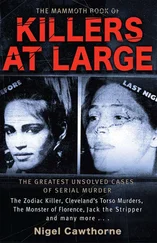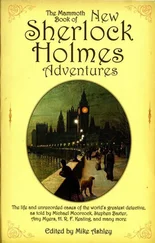We smoked our cigars, and Holmes drank his cup of chà . “It is not to my taste either, Watson. But one must oftentimes suffer in the interests of science. Hand me the package, will you?”
I took the bulky envelope from off the table. It was inscribed with a florid “Elliott & Fry”, and the flap had been closed with an adhesive rosette in the shape of an orange dandelion. “It’s far heavier than I expected,” I said as I handed it to him.
“They are cabinets,” he said, laying the unopened package on the table, “larger than cartes-de-visite . I was thinking of using the imperial size at first, but the format is even larger, too expensive for the scheme I have in mind.”
“Scheme?” I said.
To be frank, I had almost forgotten that there was a purpose behind our expedition to the photographic studio, and that it had something to do with the security of the Suez Canal.
“We were speaking of eyes, noses and mouths the other day, as you will recall …”
“And Mrs Hudson spoke of dressing up a pig as a silk purse—”
“I am sure she was speaking metaphorically,” Holmes interjected. “And then we went to the photographic studio and had some studies made of the human physiognomy …”
“Your face, you mean?”
“Exactly, Watson. We have some of the most wonderful inventions of the nineteenth century at our disposal, yet we do not use them to the full. If I am correct, and I believe I am, we may have found an answer to Brother’s conundrum. Do you, by any chance, have your passport about you?”
“I have it here,” I said with a laugh. “I carry it in my medical bag out of habit, I suppose. One never knew at the start of a day in London whether we would end up sleeping in Ostend or Biarritz. You have such a habit of charging off …”
“May I see it?” Holmes asked. He held it up without opening it. “Is there any reason why I should not present myself at the customs in Alexandria or Aden, and claim that I am you?”
“None at all,” I began to say, then I saw where he was leading. “But with a photograph affixed …”
“Indeed, a photograph, taken in a specific fashion to reveal what makes each man himself, would mean that only one man – the man portrayed in the photograph – could use the document.”
“What use is that?” I asked. “If a man of unknown qualities were to present himself …”
“No man is of unknown qualities today, Watson. If a man is a spy, a government representative, or a known criminal, and if such people were systematically photographed in the manner that I hope to be able to demonstrate to you in a few moments, there would be little or no chance of his being able to get through the customs barriers without being recognised. If Lombroso were correct, and if there were a criminal type, an atavistic delinquent, the matter would be simpler, of course, but it hardly matters, thanks to another great invention of recent times.”
“Which one?” I asked.
He paused, and waved the passport at me before he gave it back. “Ernest Hummel’s telediagraph.”
“That’s new to me,” I said.
“By copying the original photograph on to shellac foil, the picture can be sent one hundred or ten thousand miles by telegraph.”
“I still don’t see it,” I said.
“More tea?” asked Holmes.
“No thank you,” I replied smartly.
“Imagine that a man presents himself at the customs in Dover. If doubts were raised about his identity or intentions, his picture could be transmitted to London – Scotland Yard, let’s say, New Scotland Yard as it will soon be – where a classified photographic Rolodex system of known faces could be kept. By referring to the most prominent facial features – the eyes, nose, mouth or ears – an identification could be made, and an order sent by telegraph to Ostend, Calais or Boulogne to have him arrested on arrival.”
“I see,” I said. “But where is the system in it?”
“It is a question of geometrics,” Holmes replied. “Did you note how close the camera was to my face? Exactly thirty-seven inches. Four footsteps, plus one inch. And the lens?”
I shook my head.
“A Vöigtlander Rapid Rectilinear Portrait. Which means?”
“What does it mean?” I asked.
“If such a lens is used at such a distance, always and invariably, we can say that a triangle traced between the tips of the ears and the point of the nose will always correspond in that person, and no other. Equally, a triangle drawn between the centre of the pupils and the extreme point of the chin. Or between the corners of the mouth and the meeting of the eyebrows. ‘Biometric’ would be a suitable word for it, I believe …”
“Let’s examine the photographs and see,” I said, breaking in on his enthusiasm. I had understood what he intended about triangles, I think, but like Doubting Thomas I wished to stick my finger in the gaping hole and make certain.
Holmes picked up the package and broke the seal. Then he picked up a wooden ruler. “Do you have a pencil and paper?” he asked me, taking out one of the cabinet photographs.
I took out my silver propelling pencil and my pocket notebook. “What do I have to do?”
“Simply write down these measurements as I give them to you.” He laid the portrait on the table, laid the ruler on the photograph and said: “Corner of eye to corner of eye, 285 millimetres. Corner of eye to tip of the nose, 207 millimetres. We could take more measurements, using the lips or the chin, but these will do for the present purpose. Now, a profile,” he said, taking out another of the photographs. “Point of brow to tip of nose, then the distances from those two extremities to the tip of the ear lobe. If we chose the left profile instead of the right, the measurements would differ significantly.”
He gave me the distances, and I made a note of them.
“Why are you using the decimal system?” I asked.
“Surely you mean the metric system. It’s the only useful thing to have survived from the French Revolution,” he said. “I’m amazed it has not been universally adopted, allowing a fragmentation towards the infinitesimal with which the British inch cannot compete. Now, Watson, I want you to draw a T based on the longest measure in each case, then draw in the triangulation and cut them out – I have a pair of sharp scissors ready for the task. At that point, we may see whether our triangles accurately measure the distances in the other pictures in our sample.”
“Ingenious,” I murmured, as I cut along the lines, “though it makes a mess of my pocketbook.”
At that point, laying out the portraits of Sherlock Holmes with – and without – his false beard and pince-nez, we placed the frontal and profile triangles over the photographs.
“They match perfectly every time!” I congratulated Holmes.
“Wouldn’t you care for a drop of tea to celebrate?” he said, turning to his samovar, while I examined the remaining portraits.
“Thank you, no,” I said. “Now, where is my photograph, I wonder?”
Apart from the fourteen cabinet cards of Sherlock Holmes, the only other thing contained in the package was a black paper envelope of slightly smaller dimensions. We had paid no attention to it, believing it to be, I suppose, a receipt for the work done, a sum which Holmes had paid when the package had been delivered that morning by a boy from the Elliott & Fry studio.
Holmes was busy, loading his cup of loathsome Woojeon tea with six cubes of sugar. “The final test in the tea series for today,” as he himself remarked.
I opened the black envelope, pulled out a flimsy sheet of paper.
“It’s a photograph,” I said, “but not mine. It must belong to someone else.” I turned the picture over, and found a large letter M written in blue crayon on the back of it. “And what in heaven’s name is this supposed to mean?”
Читать дальше










